An original interpretation of the archival documents brings together different authors focusing on the relationship between architecture and art in their work.
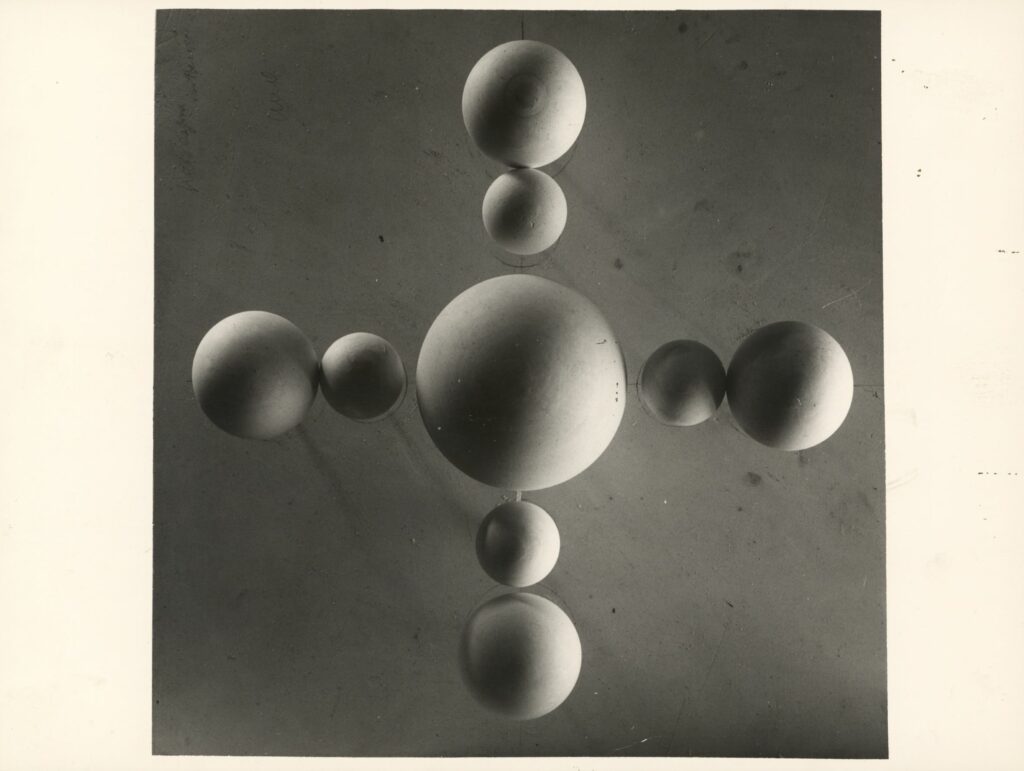
BBPR, Costantino Dardi, Vincenzo Monaco, Amedeo Luccichenti and Luigi Moretti are the protagonists of the exhibition „Architetture a regola d’arte“ , which stems from the desire to enhance and share the precious materials that have enriched MAXXI Collection in recent years, in particular the archives of some of the most important Italian architects of the 20th century.
Practical info
„Architetture a regola d’arte“
December 7, 2022 – October 15, 2023
MAXXI – National Museum of 21st Century Art
Via Guido Reni, 4a, Roma RM
Italy
From the restoration and set up of the Museums of Castello Sforzesco in Milan by BBPR to the architecture that houses and integrates with important works of art by Studio Monaco Luccichenti; from the exhibition design of Costantino Dardi and his work with critics and artists to Luigi Moretti’s passion for art – a connoisseur, enthusiast and expert, refined collector and gallery owner, as well as an architect.


The display of projects, documents, images and correspondence highlight an educated and interdisciplinary approach to architectural projects, where personal and professional dimensions intersect.
The exhibition project presents over 400 works, including models, documents, drawings, projects, installations, photographs, and correspondence from some of the leading architects of the 20th century – BBPR, Costantino Dardi, Vincenzo Monaco and Amedeo Luccichenti, Luigi Moretti – whose professional archives are preserved in the MAXXI Architecture Collection. These architects were united by the profound relationship between architecture and art that permeated their work. The exhibition showcases historical installations and works by significant artists with whom the architects collaborated, including Saul Steinberg, Costantino Nivola, Daniel Buren, Giuseppe Capogrossi, Pietro Consagra, Antonio Corpora, Nino Franchina, Giulio Paolini, Gino Severini, Giuseppe Uncini, highlighting the continuous dialogue and interplay between art and architecture. The exhibition underscores a sophisticated and interdisciplinary approach in which the personal and professional dimensions often intersect.
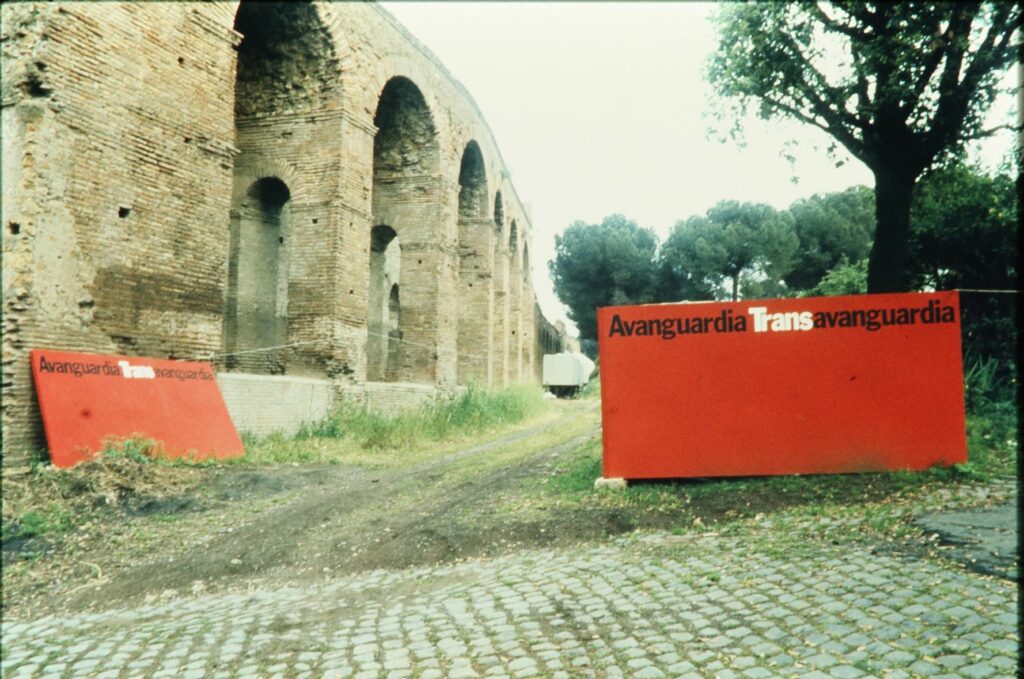
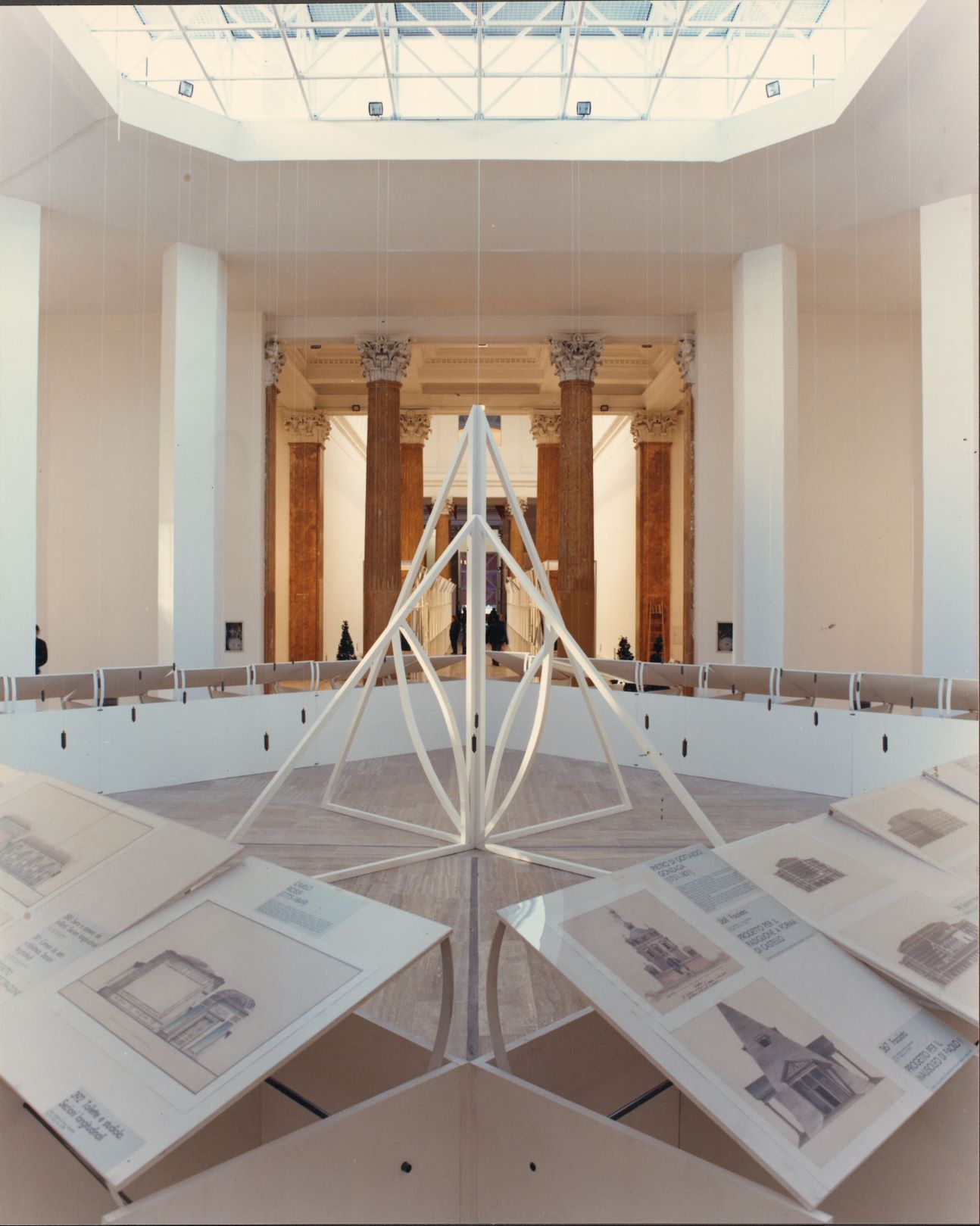
Visitors can explore the architectures that welcome and integrate important works of art from the Monaco-Luccichenti Studio; the spectacular exhibitions designed by Costantino Dardi in dialogue with critics, artists, and even filmmakers; and Luigi Moretti’s love for art, his knowledge, passion, and expertise as a refined collector and gallerist. Additionally, materials from the recently acquired BBPR Archive are exhibited for the first time. The exhibition offers an exciting glimpse into the partnership between architects and artists that characterized a crucial phase in the country’s cultural history.
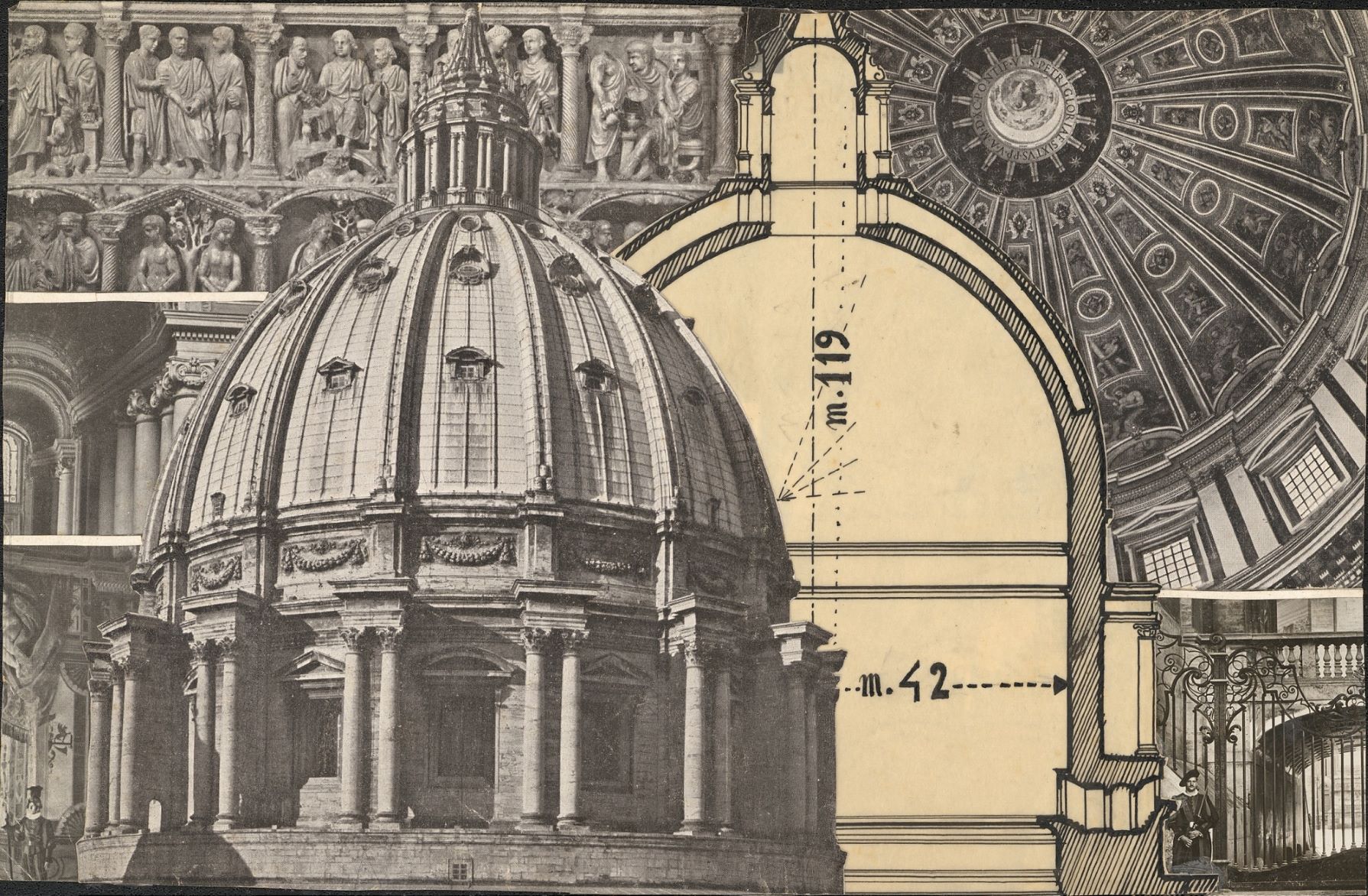

The Exhibition Pathway The exhibition is divided into four rooms, each dedicated to an architecture studio, which presents their projects, history, and relationship with artists. Different authors, united by the common thread of the expressive and spatial research, are showcased through various approaches, languages, and materials.
The four rooms are interconnected by an intimate and private space, where the personal imagination of each author takes shape through a sequence of suspended and fragmented images that anticipate and guide the interpretation of the major projects displayed in the larger halls. These small wunderkammers house personal letters, such as those between Uncini and Dardi or Severini and Monaco, as well as images, sketches, and photographs that reveal the personality of each architect and their friendships.
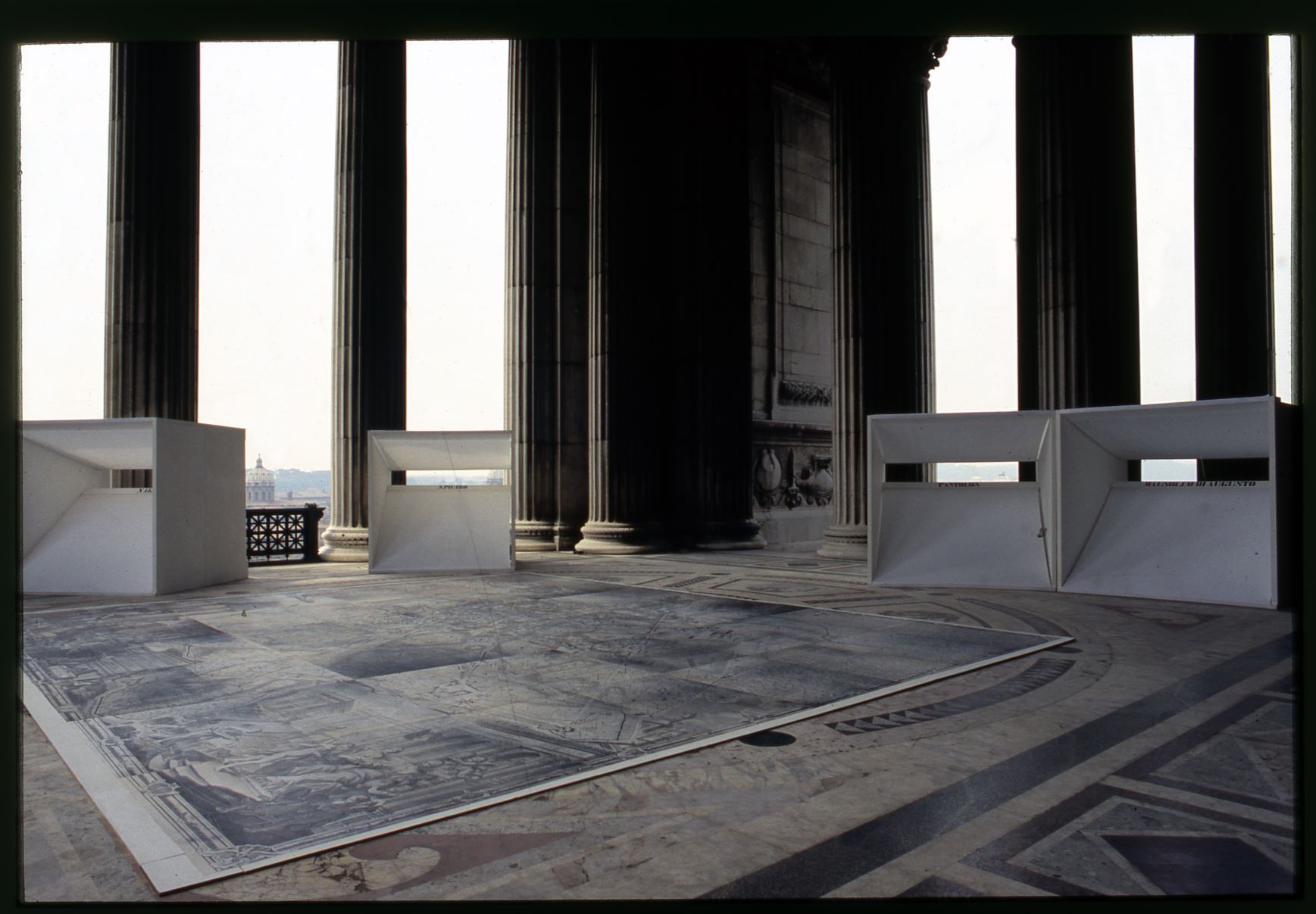

The exhibition begins in the space dedicated to the BBPR Studio, focusing on the restoration and musealization project of the Sforza Castle in Milan. Damaged during the bombings of 1943, the castle became one of the first and most important restoration projects of its kind carried out in Italy after World War II thanks to the work of BBPR. At the center of the room, there is a life-size reconstruction of the space in Milan where Michelangelo’s Pietà Rondanini was exhibited, including a cast of the Pietà on loan from the Omero Tactile Museum in Ancona. The exhibition also presents the story of the Olivetti store in New York, the installations at the 1951 Milan Triennale, including the Children’s Labyrinth with Alexander Calder and Saul Steinberg, and the project for the Auschwitz memorial.
In the space dedicated to Costantino Dardi, a lattice structure „inspired“ by Dardi’s installations welcomes the artworks, engaging in dialogue with Uncini’s sculpture in the center of the room and the other exhibited projects. These include the project for the Italian Pavilion at Expo ’70 in Osaka and the renovation of the Palazzo delle Esposizioni in Rome in 1982. Also on display are Dardi’s etchings exhibited in 1980 at A.A.M. (Architettura Arte Moderna), juxtaposed with Giulio Paolini’s artwork titled Senza Titolo from the MAXXI Art Collection, exhibited for the first time at MAXXI. Additionally, there are images from the famous exhibition „Avanguardia Transavanguardia ’68-’77,“ curated by Achille Bonito Oliva and held on the Aurelian Walls.
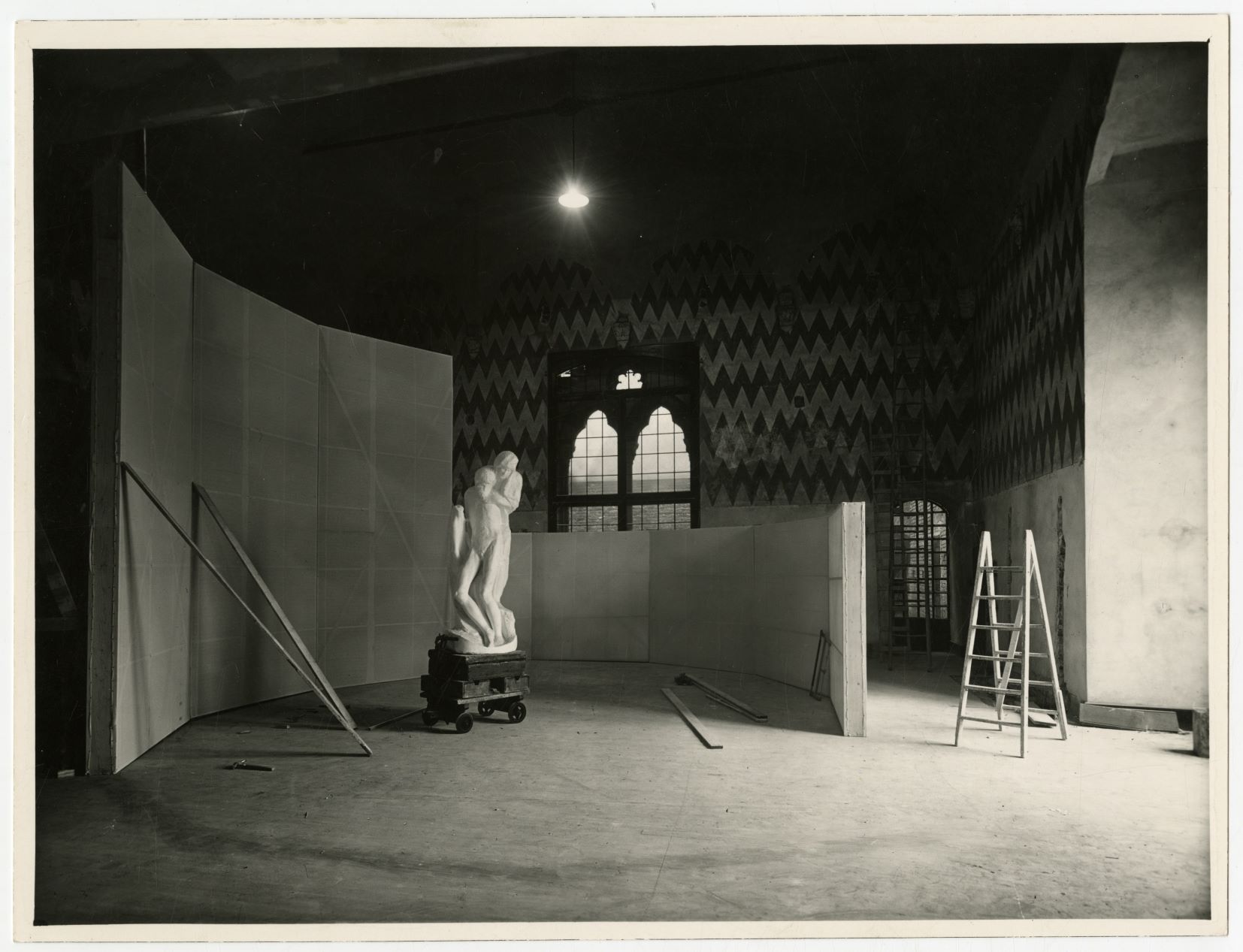

In the room dedicated to Monaco-Luccichenti, among other materials, there are photographs commissioned by MAXXI from Giovanna Silva, depicting the artistic interventions realized by renowned authors for the projects of these two Roman architects. Notably, there is a photograph of the roof of the Confindustria headquarters with flooring designed by Capogrossi, who also dedicated a painting to Vincenzo Monaco, displayed in the exhibition. The works of Nino Franchina, Gino Severini, Giuseppe Capogrossi, Antonio Corpora, all artists who collaborated with Monaco and Luccichenti, are also exhibited.
The centerpiece of Luigi Moretti’s room is his film about Michelangelo. On the walls and in the display cases, there are drawings and models that demonstrate Moretti’s meticulous and personal study of the masters of the past. Alongside these are the relationships between Moretti and his contemporaries, which took shape through the pages of the magazine Spazio and on the walls of the eponymous art gallery. Moretti’s architecture appears unexpectedly in the exhibition with images of the mythical „Contemporanea“ exhibition, curated by Piero Sartogo in 1973 in the parking lot of Villa Borghese, designed by Luigi Moretti.
The exhibition pathway begins with Michelangelo – through the cast of his Pietà Rondanini – and concludes with Michelangelo – through Luigi Moretti’s film. Symbolically, the curators entrusted Moretti with the most eloquent synthesis o

